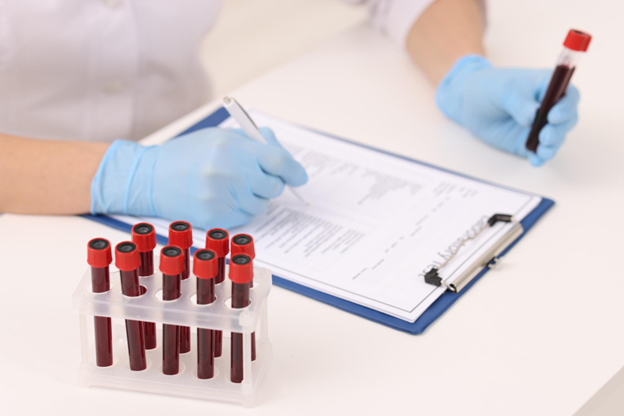What is the Glycated Hemoglobin Test (A1C Test)?
The glycated hemoglobin (A1C) test is a blood test that measures the average blood sugar (glucose) levels over the past two to three months. It is commonly used to diagnose and monitor diabetes, particularly type 1 and type 2 diabetes, by providing insight into how well a person’s blood sugar has been controlled over time.
Unlike a single blood sugar test that measures blood glucose at a specific moment, the A1C test gives a broader view of overall blood sugar control, making it a critical tool in the management of diabetes.
How the A1C Test Works
The A1C test measures the percentage of hemoglobin, a protein in red blood cells that carries oxygen, that has glucose attached to it. When blood sugar levels are consistently high, more glucose attaches to hemoglobin, increasing the A1C level.
Since red blood cells have a lifespan of approximately three months, the A1C test reflects the average blood glucose levels during this period. The higher the A1C level, the higher the average blood sugar levels have been.
Why is the A1C Test Important?
The A1C test is an essential tool for people with diabetes for several reasons:
- Long-Term Monitoring:
It provides a long-term snapshot of blood sugar control, helping to identify trends and manage diabetes effectively. - Early Detection:
Elevated A1C levels can indicate prediabetes or undiagnosed diabetes, allowing for early intervention. - Managing Diabetes:
The A1C test helps healthcare providers assess whether diabetes treatment plans are effective and whether changes are necessary. - Reducing Complications:
Consistently high blood sugar levels can lead to serious complications such as heart disease, kidney damage, and nerve problems. Regular A1C testing helps prevent or delay these complications.
Normal A1C Levels
A1C levels are expressed as a percentage. The general guidelines for A1C levels are as follows:
- Normal: Less than 5.7%
- Prediabetes: 5.7% to 6.4%
- Diabetes: 6.5% or higher
For people with diabetes, the goal is typically to keep the A1C below 7% to reduce the risk of complications, but individual goals may vary.
How to Prepare for the A1C Test
No special preparation is required for the A1C test. Unlike fasting blood glucose tests, you can eat and drink normally before the test. The A1C test is also not affected by short-term factors like illness, stress, or recent meals, making it an ideal tool for long-term monitoring.
When Should You Get an A1C Test?
The frequency of A1C testing depends on individual circumstances:
- For people with diabetes:
A1C should be tested at least twice a year if your blood sugar is under control, or more frequently if adjustments to your treatment plan are needed. - For those at risk of diabetes:
Individuals with risk factors like obesity, family history, or a history of gestational diabetes should discuss testing with their doctor.
Conclusion
The A1C test is a vital tool for monitoring and managing blood sugar levels in individuals with diabetes or prediabetes. By providing a long-term overview of blood glucose control, it helps healthcare providers adjust treatment plans to ensure better overall health. If you have diabetes or are at risk, regular A1C testing is essential to manage your condition and prevent long-term complications.
Book your test today at APR Diagnostic for expert guidance!


